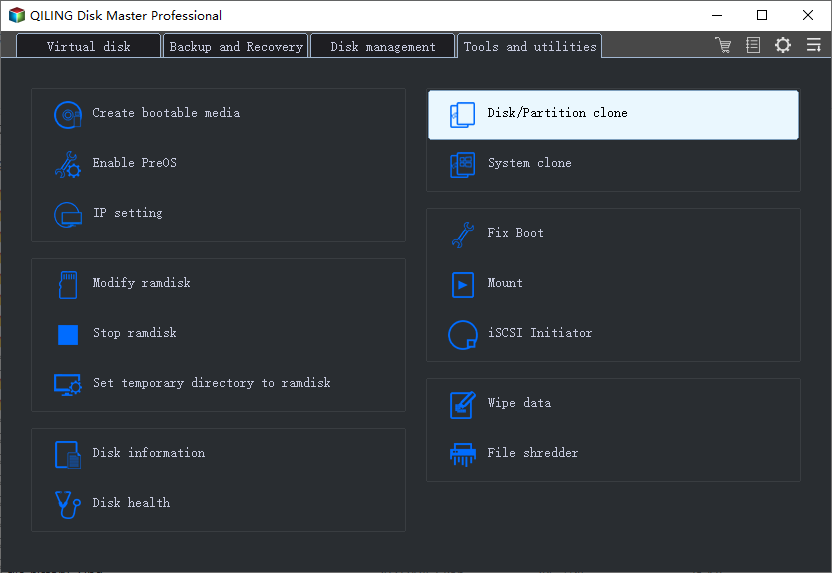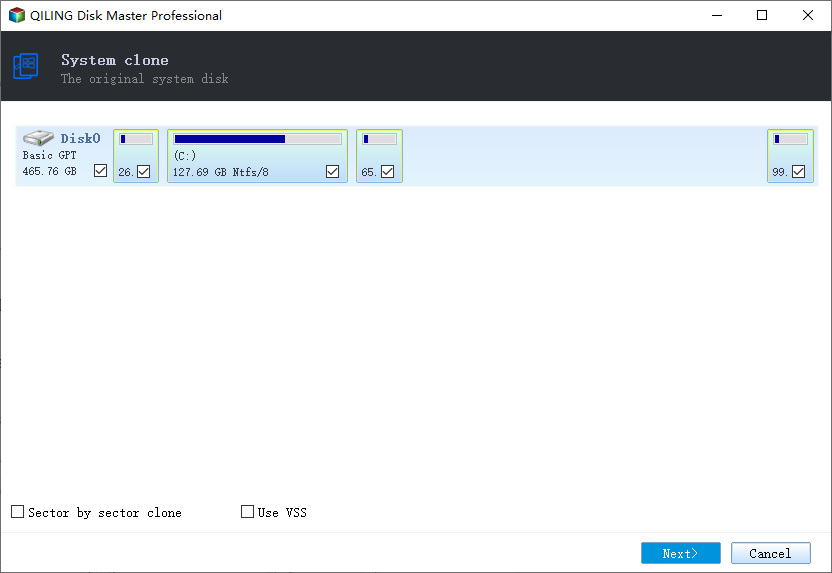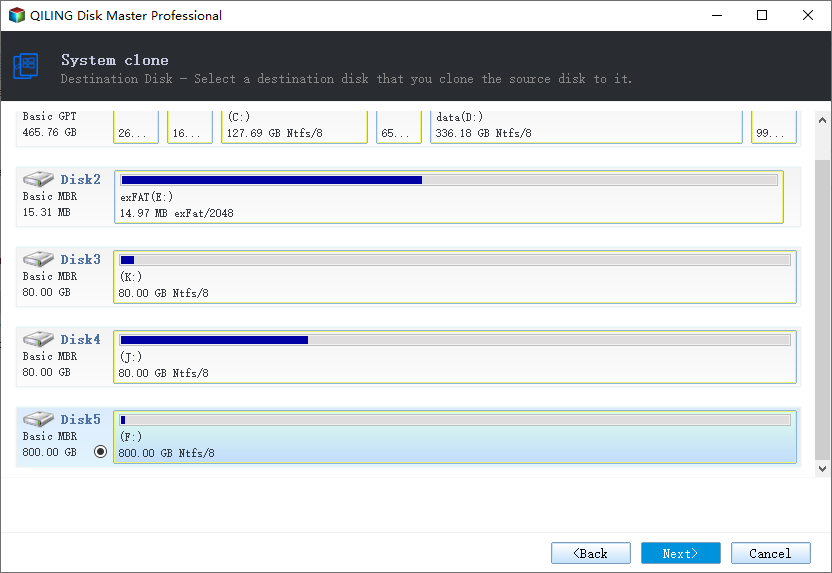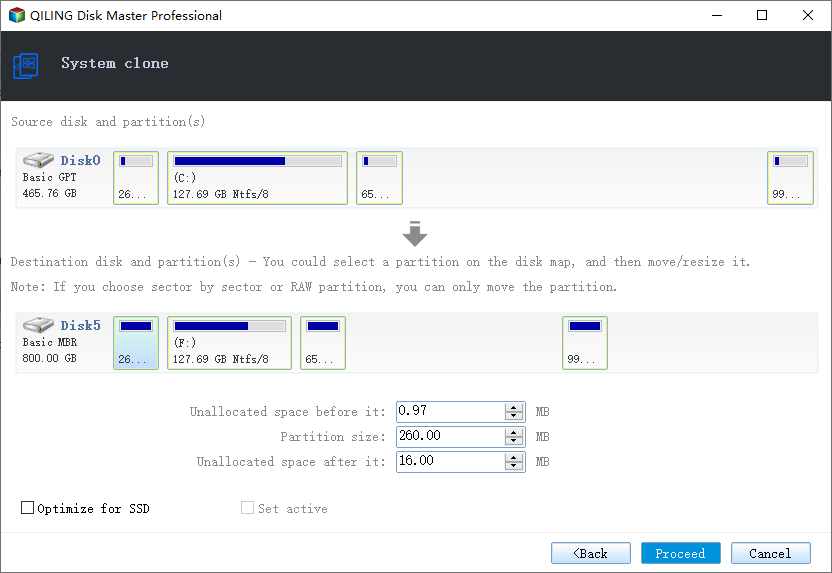Create Portable Windows 10/8/7 USB Drive in 2 Ways
What Is a Portable Windows 10/8/7
To make Windows portable, you install it on a portable storage device such as a USB flash drive or external hard drive. This allows you to create a portable Windows USB using either the Windows built-in tool, Windows to Go, or a third-party portable Windows creation tool.
Advantages of Creating a Portable Windows 10/8/7
With a portable Windows 10, you can enjoy a consistent work, study, or recreation experience anywhere, anytime, as you can simply plug in your USB drive to any computer and access your personalized Windows. This eliminates the disruption caused by time or place, allowing you to maintain your workflow seamlessly. Your portable Windows 10 becomes a reliable companion that follows you wherever you go, providing a familiar and efficient computing experience.
Having a portable Windows can be super helpful in case your computer's main Windows installation is damaged or won't boot, allowing you to still access your files and potentially recover them.
Creating a portable version of Windows is essentially the same as making a backup of your operating system. This means that if you experience a system crash, boot failure, system corruption, or similar issues, having a portable version of Windows can provide peace of mind by allowing you to restore your original OS exactly as it was.
Two Ways to Create Portable Windows 10/8/7
To create portable Windows 10/8/7, you should prepare:
- A USB drive is a portable storage device that can be used to transfer files between computers. It can be a small USB flash drive, a pen drive, or even an external hard drive with a capacity of at least 16GB.
- A functional computer
You can create a portable Windows by using Windows built-in tool - Windows to Go or third-party software, but there's a limit on the version of Windows supported by Windows to Go. To overcome this, you're highly recommended to use a third-party system backup software like Qiling Backup to create a portable Windows 10/8/7.
Method 1. Use Qiling Backup
Qiling Backup is a portable Windows creation and backup tool that allows users to clone their system onto a USB drive, making it portable, and can be used with any Windows edition, making it a more accessible option for users with older or non-enterprise Windows versions.
Download Qiling Backup now.
A step-by-step guide to creating portable Windows on a USB drive:
USB requirements:
1. To check the system C drive's disk space usage, you can use the built-in Windows tool, Disk Cleanup, or the command line utility, `wmic`. Assuming the C drive has 40GB of used disk space, you should prepare a qualified USB drive with a capacity larger than 40GB to ensure sufficient space for the system and any additional data. This will help prevent data loss and ensure a smooth transfer process.
2. Use an empty new USB drive or an old one that you don't mind overwriting, as the system clone process will erase all data on it.
3. To connect the USB drive, simply plug it into your computer's USB port. Once it's connected, Windows should automatically detect it and assign a drive letter to it, which you can then use to access the drive's contents.
1. Download the Windows 10/11 ISO file from Microsoft's official website.
Step 1. Launch Qiling Backup. Click "System Clone" in the tools page.

Step 2. On the "System clone" window, the software will select the system partition and boot partition by default. The destination disk should be chosen as the USB drive.

Step 3. Select the USB destination disk/partition and click "Next".

Step 4. The software will start cloning the default partitions of your desktop/laptop to the USB drive. This process will automatically complete after which the USB drive can be safely removed.
tick the option "Optimize for SSD" when it's necessary.

Step 5. Boot from the USB drive.
- Connect your portable USB to the computer
- Restart the computer and press "Del" to enter BIOS
- To set the PC to boot from the portable USB, change the boot order in the BIOS under the "Boot" tab, so that the USB device is prioritized over the hard drive. This allows the computer to load the operating system from the USB drive instead of the internal hard drive.
- Save changes and you'll see your system booting up from the USB drive.
Now that you've successfully created a portable Windows on your USB drive, you can use it to run your system on any computer available. This means you can easily switch to your portable Windows setup on any computer, making it a convenient option for those who need to use Windows on different machines. Additionally, if you ever need to migrate your OS to a new device, you can simply follow the same steps above to complete the task.
Method 2. Use Windows to Go
To create a portable Windows 10/8, you can use Windows to Go, a feature available on Windows 8 Enterprise, Windows 10 Enterprise, or Windows 10 Education. This allows you to create a Windows to Go workspace on a USB drive, which can be booted to use the system. Alternatively, you can use a backup utility like Qiling if your computer does not meet the Windows to Go requirements.
To create a portable Windows 10/8 on a USB, follow the official guide provided by Microsoft, which offers detailed instructions on how to set it up.
Knowledge Base
I'm ready to rewrite the information in one paragraph shortly. Please go ahead and share the two issues related to the current topic.
Install Windows on USB VS Install Windows from USB
Some users are confused about the differences between installing Windows on a USB drive and installing Windows from a USB drive. Installing Windows on a USB drive means creating a portable Windows 10 on a qualified storage device, as described in this article. On the other hand, installing Windows from a USB drive involves creating Windows installation media, which can be used to install or reinstall Windows on a different PC, using a USB flash drive or DVD. This process requires a PC, a USB flash drive or DVD, a Windows product key, and Microsoft's media creation tool.
System Transfer
You can also use your Windows 10 system on another computer without reinstalling by performing a system transfer. This method allows you to use the original system on the target device, making it ideal for switching from an old computer to a new one. Unlike a portable device, system transfer enables you to use the exact same system on the new device, preserving all your settings and applications. This can be a convenient option for those who want to reuse their existing system on a new machine.
The Bottom Line
Using Qiling Backup to create a portable Windows is significantly simpler than other methods. This tool is not only useful for creating a portable Windows, but also a vital choice for preventing data loss, which occurs frequently. Regular backups of important items such as disks, partitions, systems, files, and more can help prevent data loss and minimize the impact of unexpected events.
Related Articles
- How to Clone a Bootable Hard Drive in Windows 10/8/7
- How to Clone Hard Drive in Windows 7 32 Bit or 64 Bit to Another Hard Drive
- Copy a Flash Drive to Another Flash Drive on Windows & Mac
- Windows 10 Reset vs Clean Install
- Clone SSD/HDD Sector by Sector